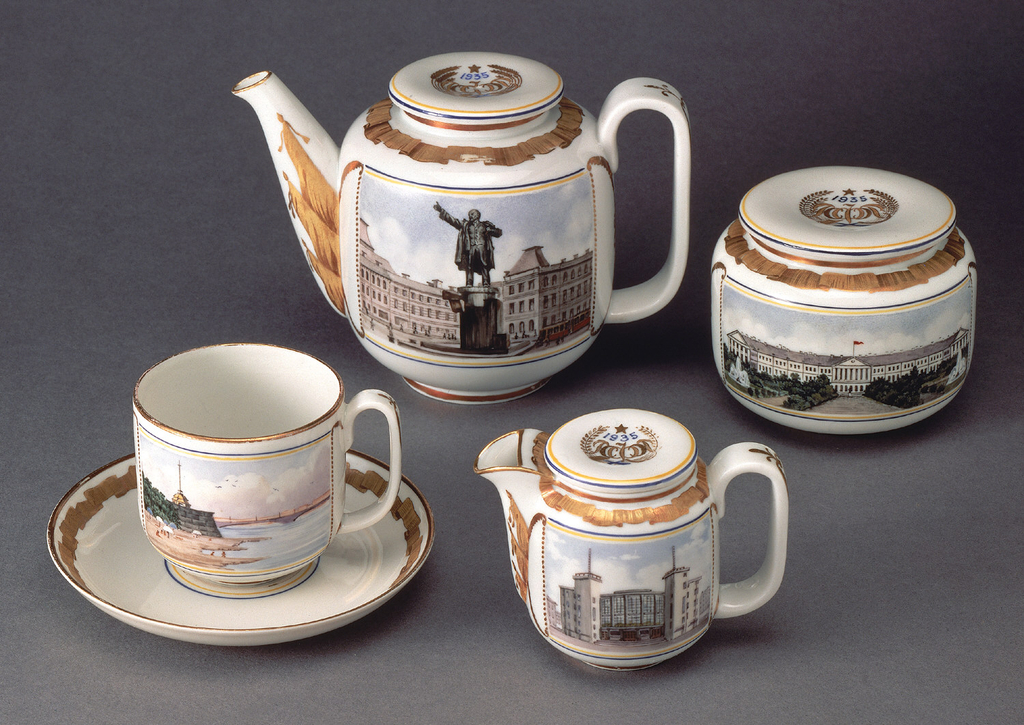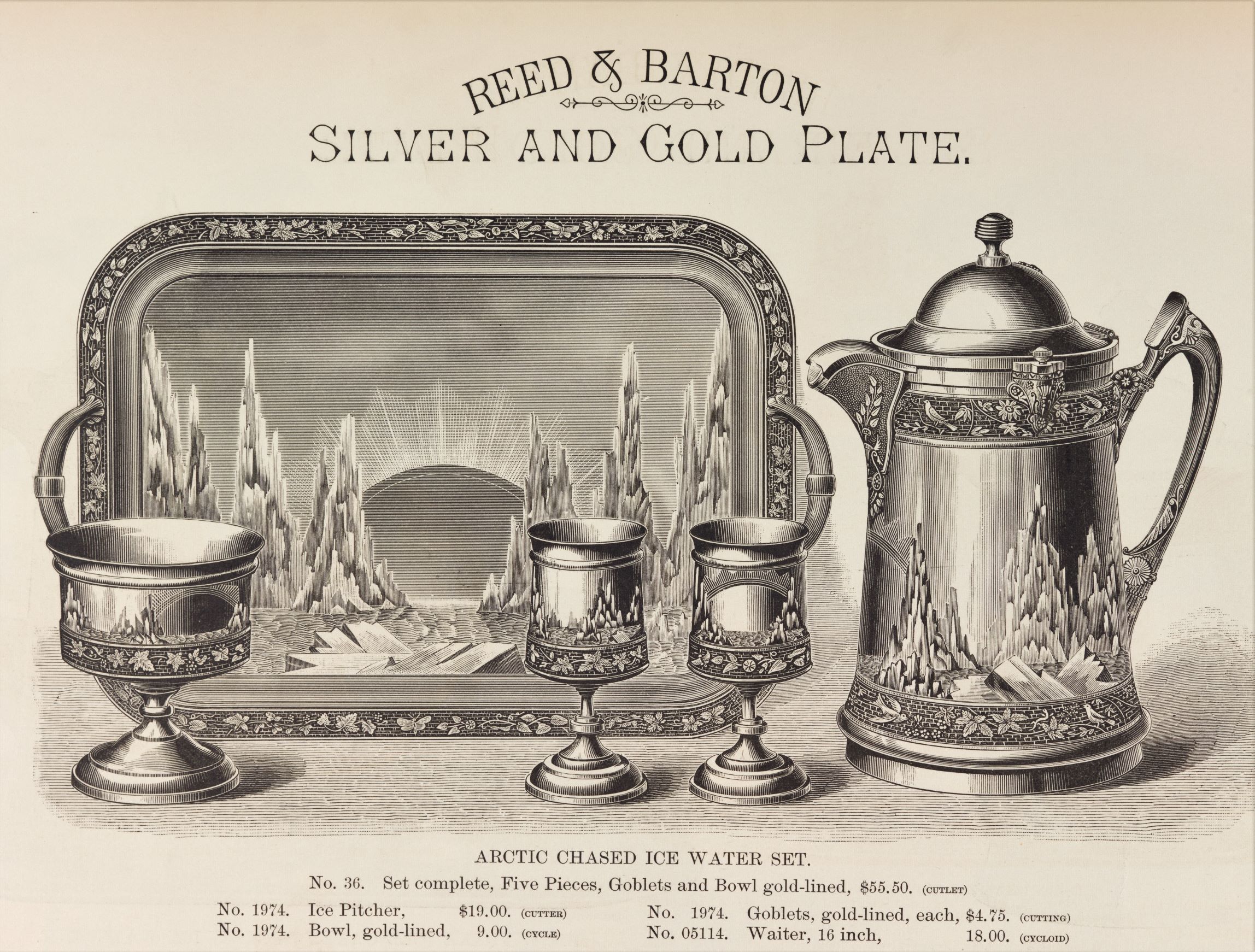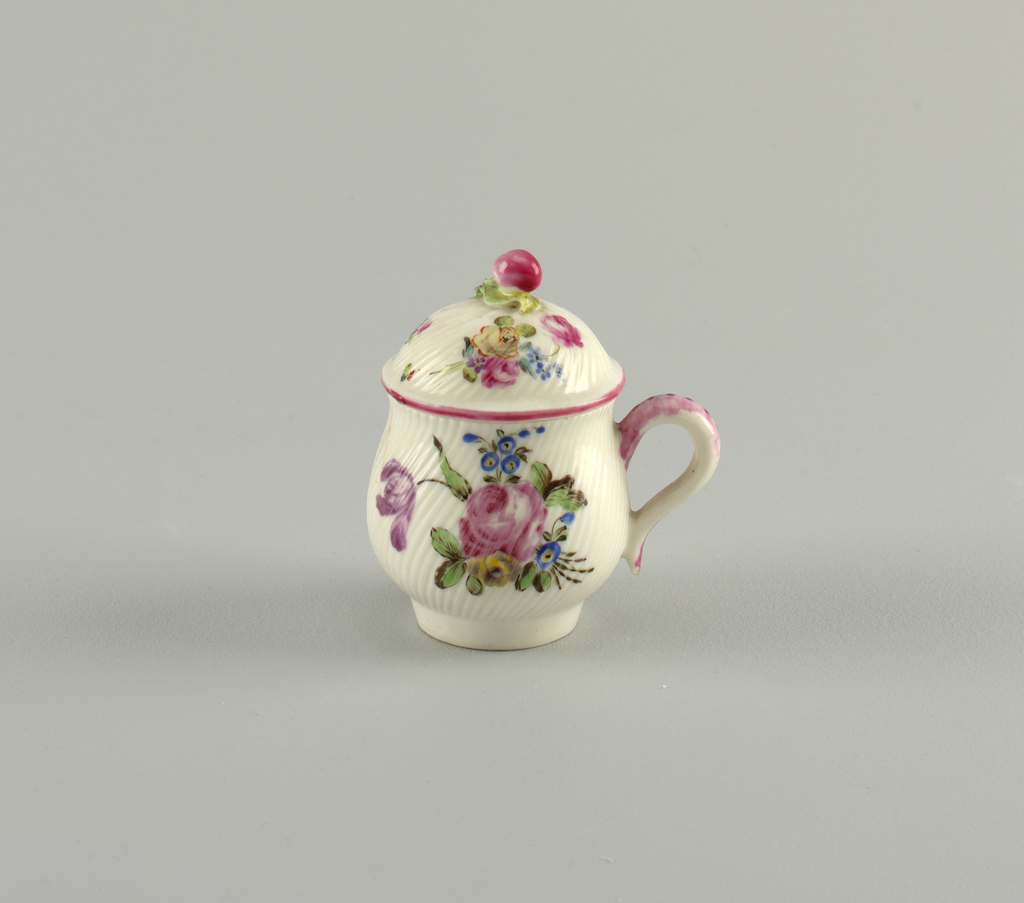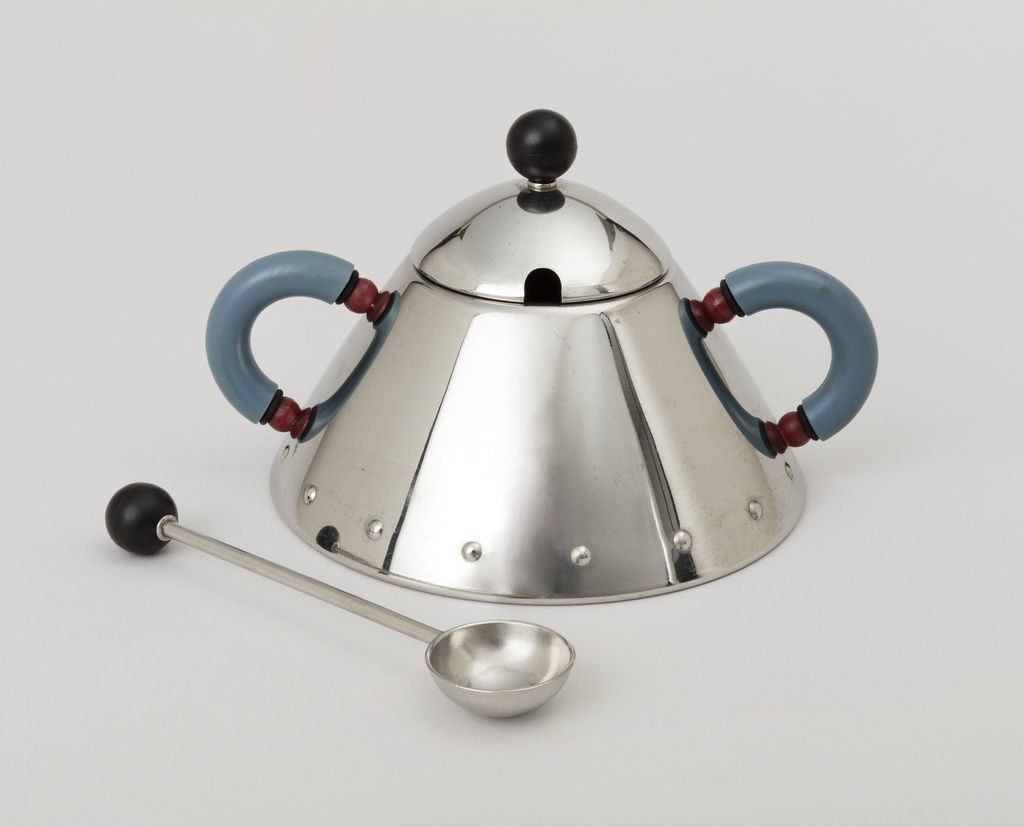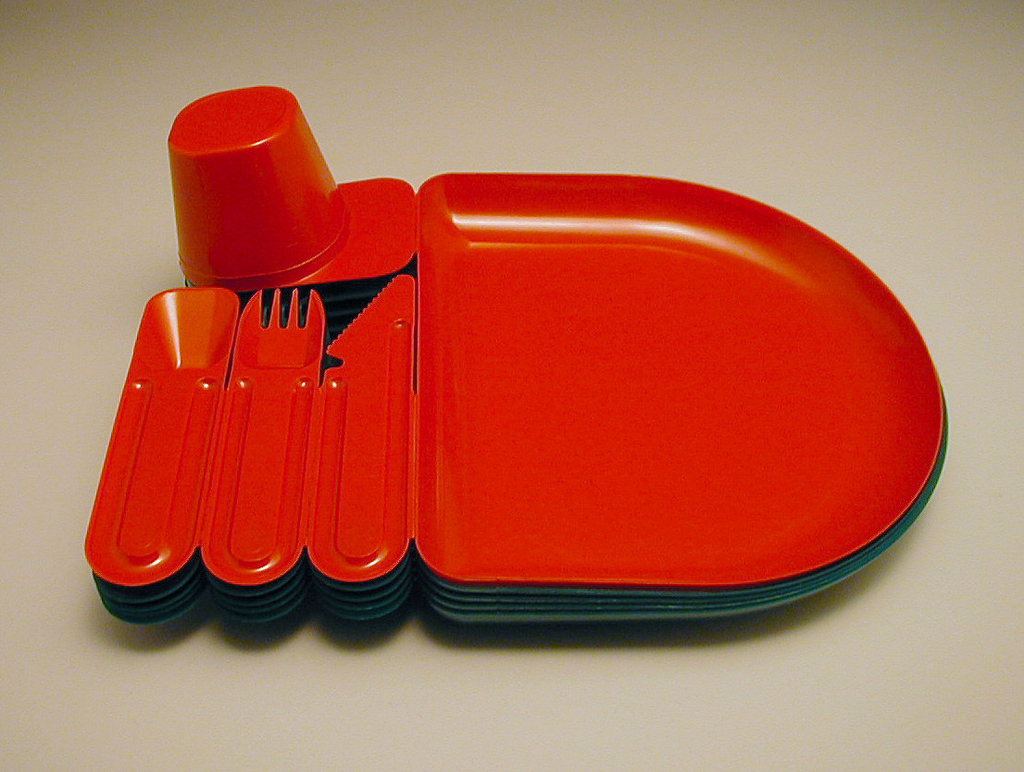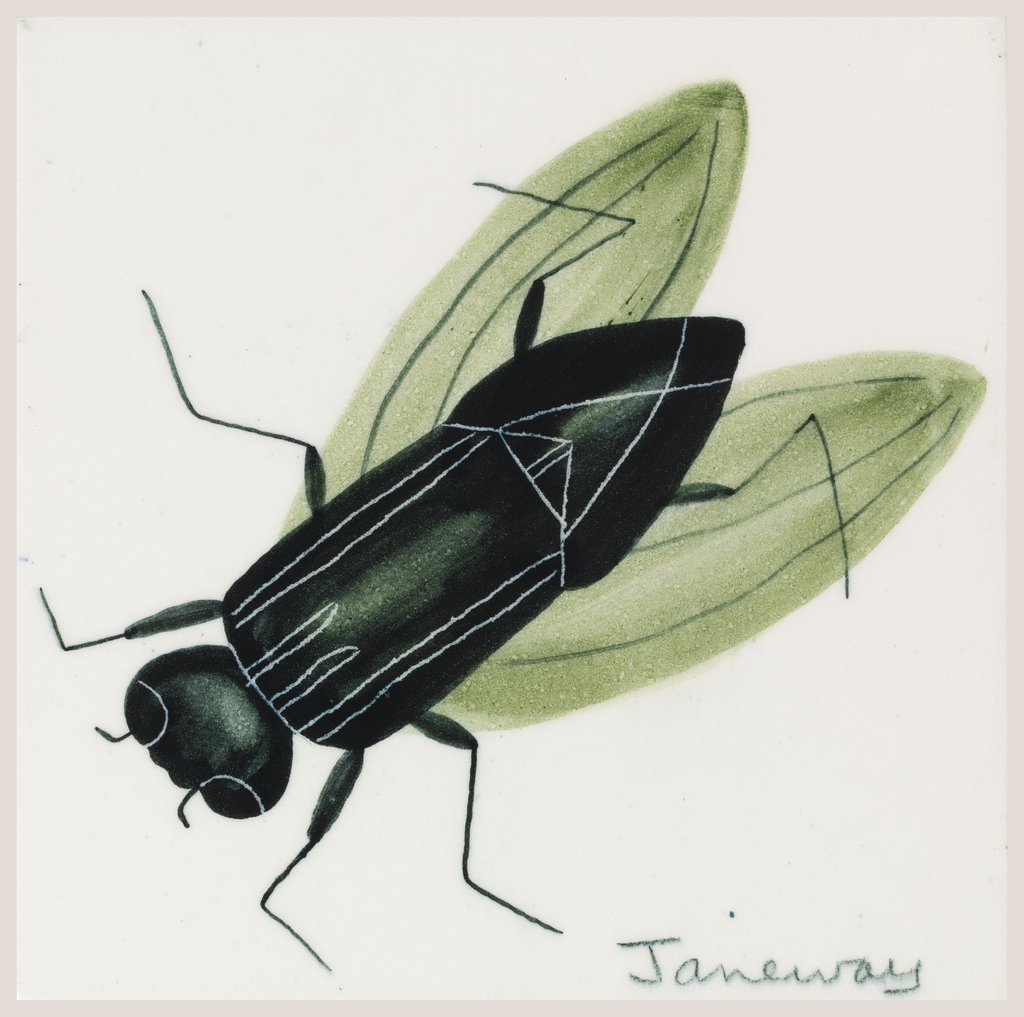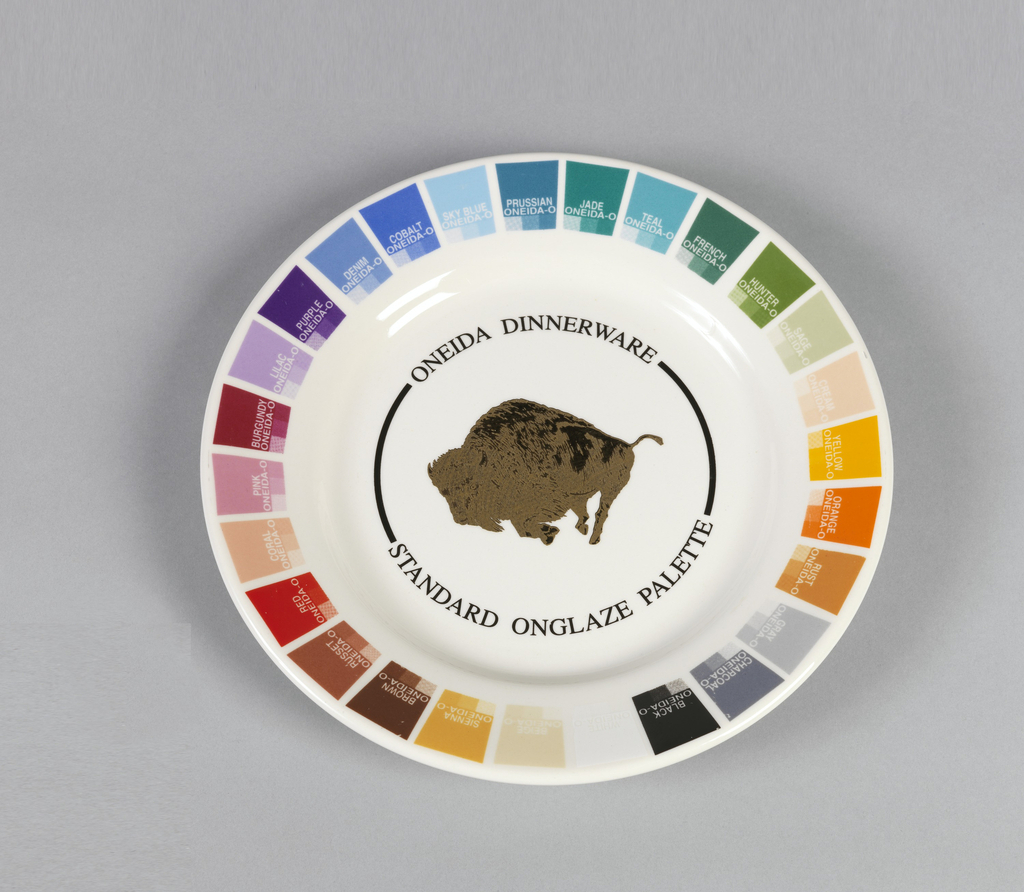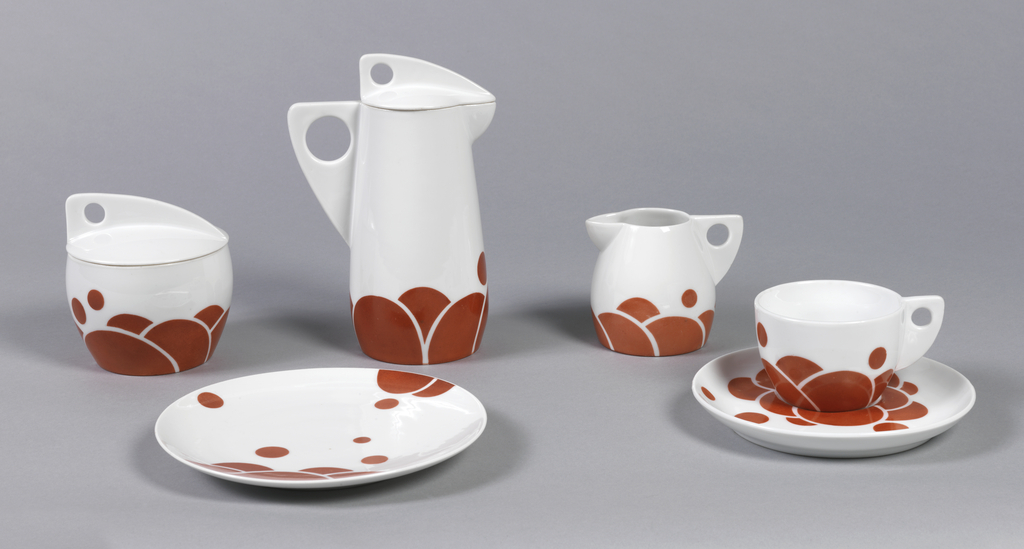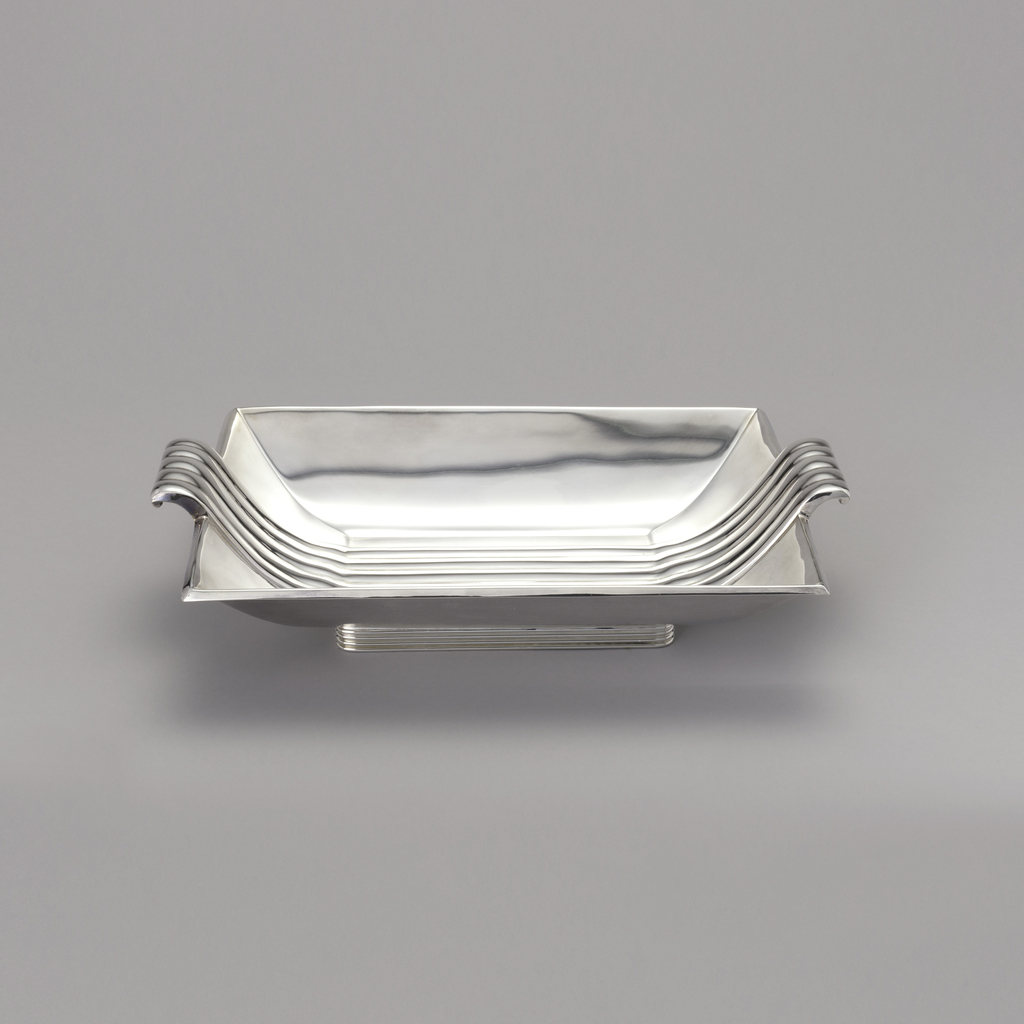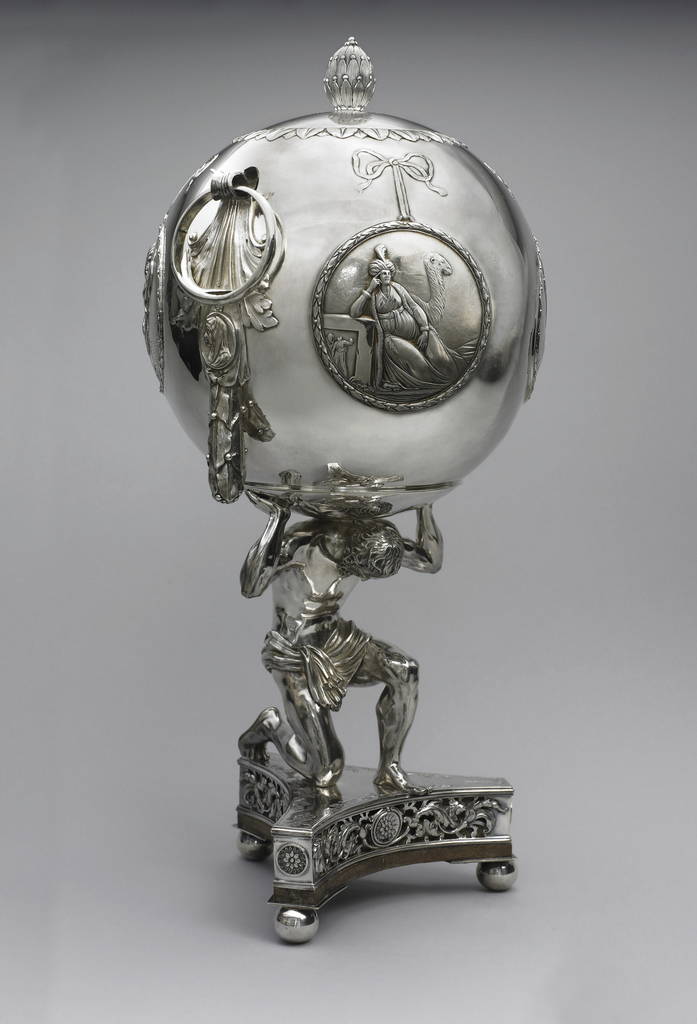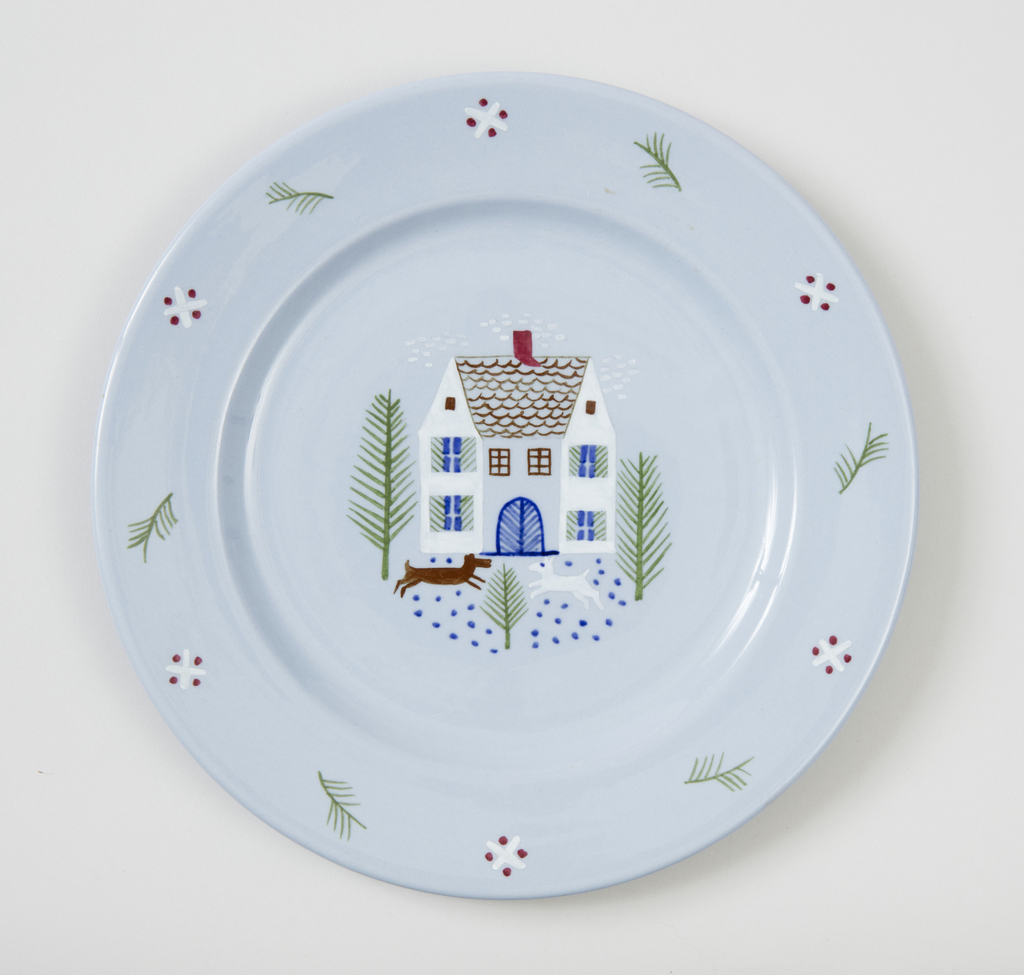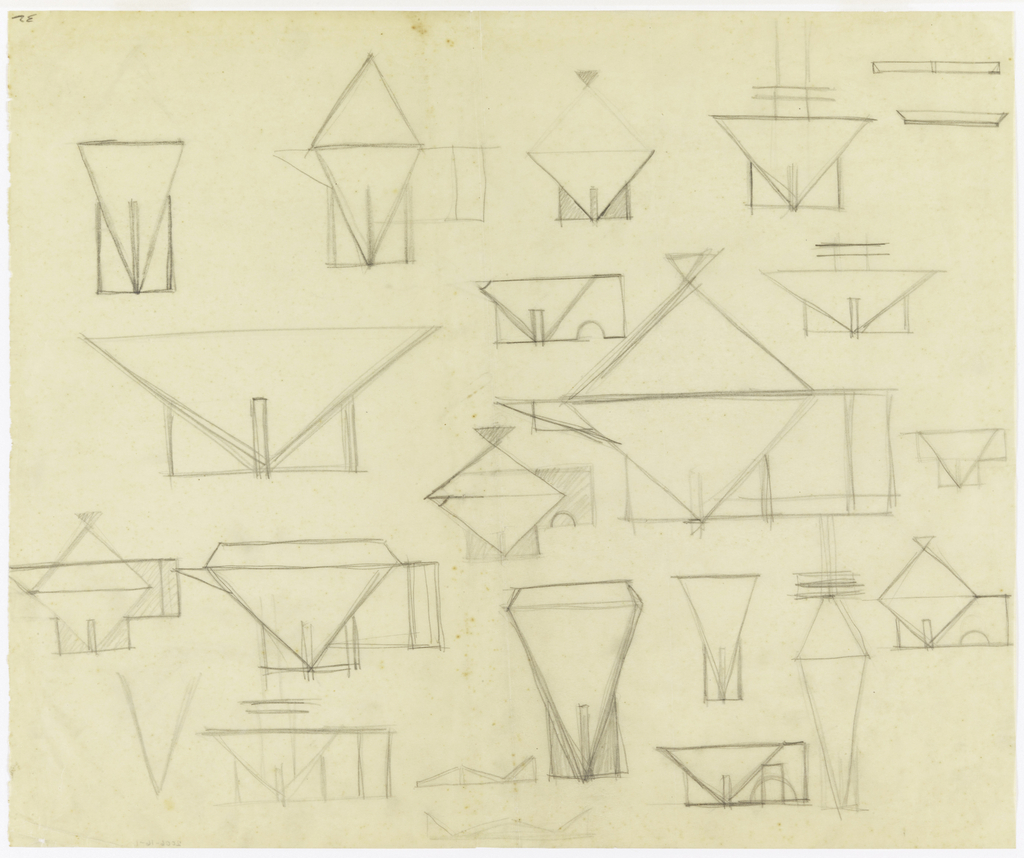In celebration of National Design Month, October’s Object of The Week posts honor past National Design Award winners. A version of this post was published on November 13, 2012. Eva Zeisel, a major figure in twentieth-century industrial design, won the National Design Award for Lifetime Achievement in 2005. Although best known for her contributions to mid-century...
The clean-lined geometric forms of these salt and pepper shakers show American modernism’s affinity for simplicity. During the 1930s the emergence of chromed metal, steel, and aluminum tableware coincided with the rise of modernist designs for everyday objects. These simple metal cubes were created with cost-effective manufacturing techniques, stamping and piercing, to create utilitarian and...
Does the frozen scenery on this Reed & Barton beverage set make you feel like the ice water is really icy? More refreshing? Are you transported to frostier climes in faraway places? Icebergs “startle, frighten, awe; they astonish, excite, amuse, delight and fascinate”[1]. Depending on where you live, icebergs and polar bears can be as...
On July 14th, France and many other nations around the world celebrated French National Day, also known as Bastille Day. The date is the anniversary of the storming of the Bastille, which took place in 1789, and marked a turning point in the French Revolution. These days, this national occasion is usually marked with parades,...
It is always surprising to read about famous designers or manufacturers who were hesitant about the career paths that turned them into household names. Danish silversmith Georg Jensen (1866-1935) was one such person. Initially, he had hopes of becoming a sculptor, but focused on silversmithing as this proved to be a more lucrative line of...
This stainless steel sugar bowl designed by architect Michael Graves for Italian metalwork manufacturer Alessi S.p.A. is part of a line of kitchen and table wares that have found their way into homes around the world. Graves’s model 9093 whistling kettle of 1985 was the initial object in the range. The conical shape–with its polished...
Writing about an object designed for al fresco dining could not be a better way to tempt the weather gods to bring on the return of spring. This object of the day is ‘Plack’, a picnic tray designed by Jean-Pierre Vitrac, and produced by Diam in 1977. In contrast to indifferently designed plastic picnic ware...
Author: Victoria Jenssen I grew up with Carol Janeway’s animal-themed tiles in my parents’ home, but only since my parents’ death at the turn of this century did I start researching Janeway’s career. My family’s amusing tiles were leftovers from my father’s career of the post-war 1940s when he crafted Janeway-designed hardwood frames for her...
Sample plates are produced by manufacturers of ceramic tableware as a means of demonstrating the colors with which items, usually in a particular product line, could be glazed. Sample plates provide insight into the colors—and, in some cases, decorative patterns—that were available and popular at particular moments in time. The Cooper Hewitt collection includes several...
In celebration of Women’s History Month, March Object of the Day posts highlight women designers in the collection. Today’s blog post was written by Adriane Dalton and originally published on September 17, 2013. Born in 1877, Jutta Sika was an Austrian designer working in a variety of different media. Sika received formal training in both...
In celebration of Women’s History Month, March Object of the Day posts highlight women designers in the collection. Today’s blog post was written by Andrea Osgood and originally published March 31, 2014. In the late 1920s, industrial design began to emerge as a viable field in the United States. Because of the Great Depression, there...
This distinctive tea urn takes the form of Atlas supporting the world. Its triangular base has openwork decoration and rests on three ball feet. The spherical urn is held aloft by the kneeling figure of Atlas, straining as he supports the globe on his shoulders. The surface is decorated with reliefs featuring four wreathed circular...
The mermaid, a creature formed from the upper body of a woman and the tail of a fish, has long been a legendary figure in folklore. From animated films to the sea creatures of sailor lore, the mermaid has been the subject of speculation and admiration. This green-glazed bowl with silver trim designed by Wilhelm...
Ilonka Karasz decorated this Buffalo China plate in about 1935, during the time that she worked as a designer for the company.[1] Founded by The Larkin Company, a soap factory, in 1901, Buffalo China produced soap dishes and other ceramics that were offered as premiums for purchasers of soap. The Larkin Company’s desirable premiums (including...
Gail Davidson discusses modernist designer Ilonka Karasz's geometric iterations for tableware.
